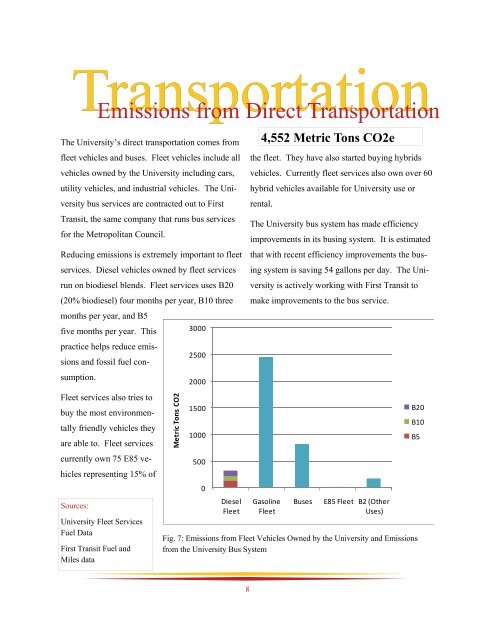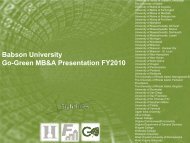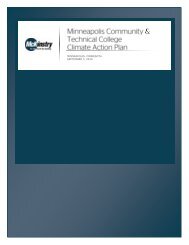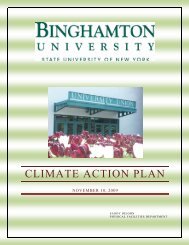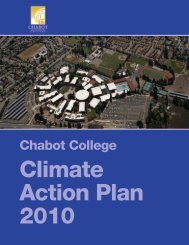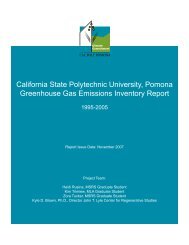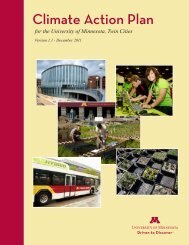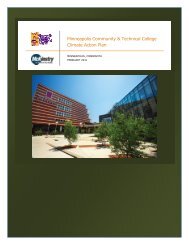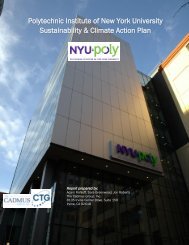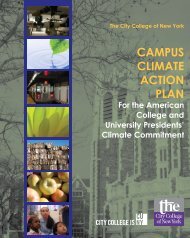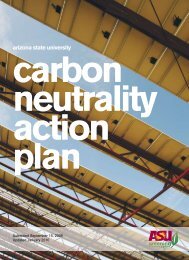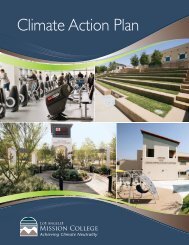Climate Action Plan - ACUPCC Reports - Climate Commitment
Climate Action Plan - ACUPCC Reports - Climate Commitment
Climate Action Plan - ACUPCC Reports - Climate Commitment
You also want an ePaper? Increase the reach of your titles
YUMPU automatically turns print PDFs into web optimized ePapers that Google loves.
TransportationEmissions from Direct TransportationThe University’s direct transportation comes fromfleet vehicles and buses. Fleet vehicles include allvehicles owned by the University including cars,utility vehicles, and industrial vehicles. The Universitybus services are contracted out to FirstTransit, the same company that runs bus servicesfor the Metropolitan Council.Reducing emissions is extremely important to fleetservices. Diesel vehicles owned by fleet servicesrun on biodiesel blends. Fleet services uses B20(20% biodiesel) four months per year, B10 threemonths per year, and B5five months per year. This 3000practice helps reduce emissionsand fossil fuel con-2500sumption.2000Fleet services also tries to1500buy the most environmentallyfriendly vehicles they1000are able to. Fleet servicescurrently own 75 E85 vehiclesrepresenting 15%500ofSources:University Fleet ServicesFuel DataFirst Transit Fuel andMiles dataMetric Tons CO20DieselFleet4,552 Metric Tons CO2ethe fleet. They have also started buying hybridsvehicles. Currently fleet services also own over 60hybrid vehicles available for University use orrental.The University bus system has made efficiencyimprovements in its busing system. It is estimatedthat with recent efficiency improvements the busingsystem is saving 54 gallons per day. The Universityis actively working with First Transit tomake improvements to the bus service.GasolineFleetBusesE85 Fleet B2 (OtherUses)Fig. 7: Emissions from Fleet Vehicles Owned by the University and Emissionsfrom the University Bus SystemB20B10B58


